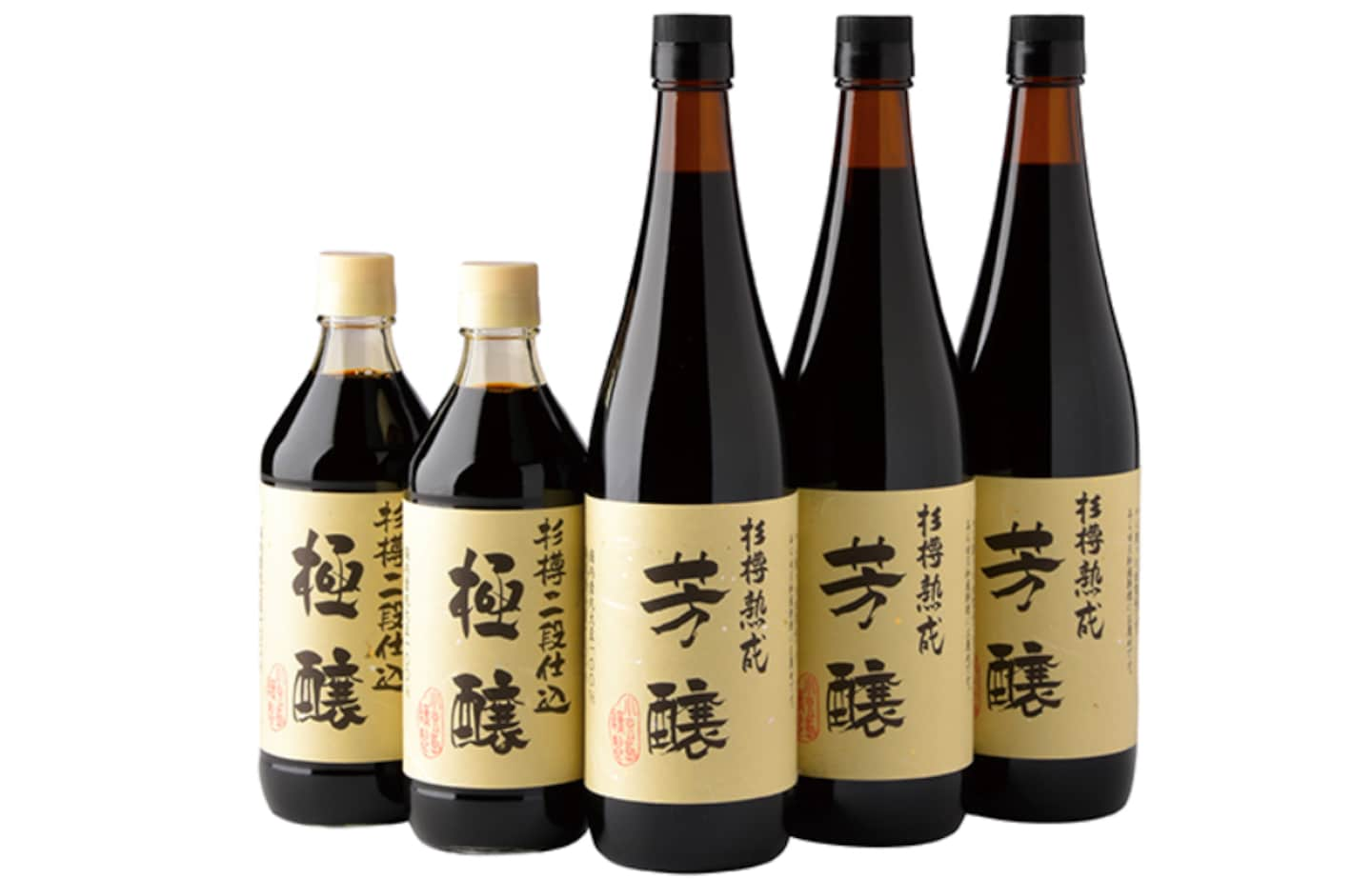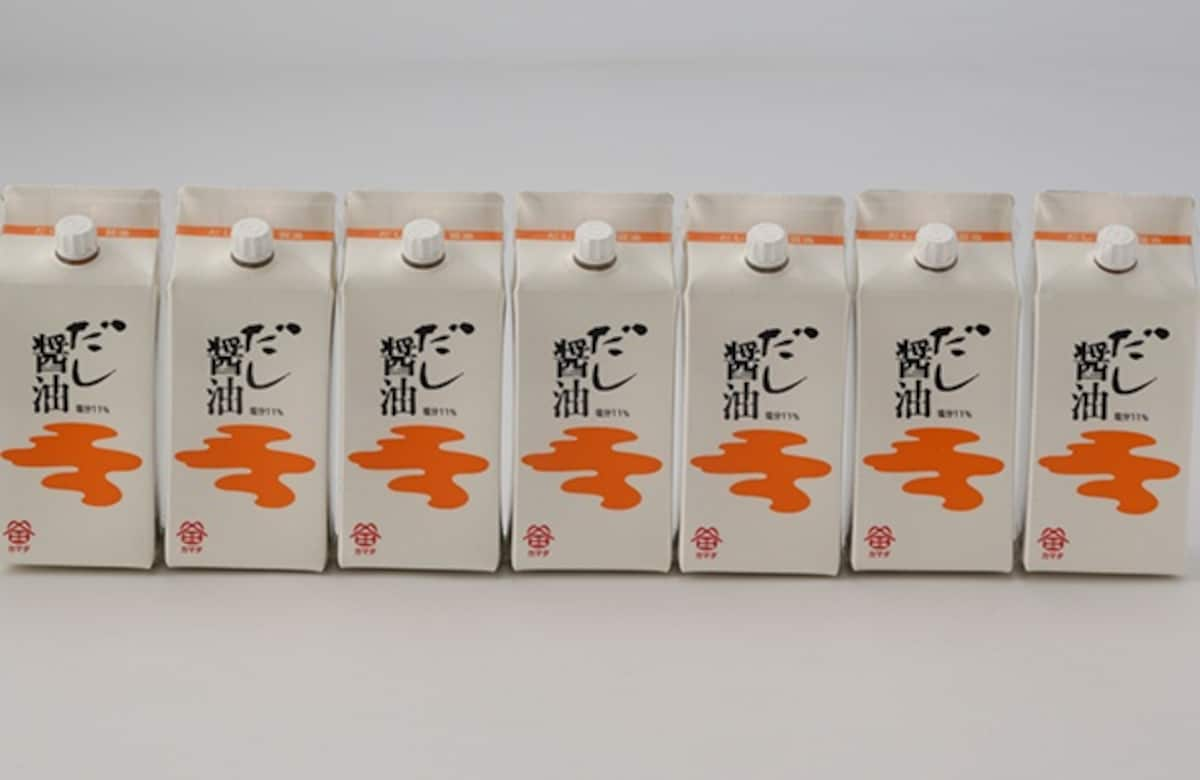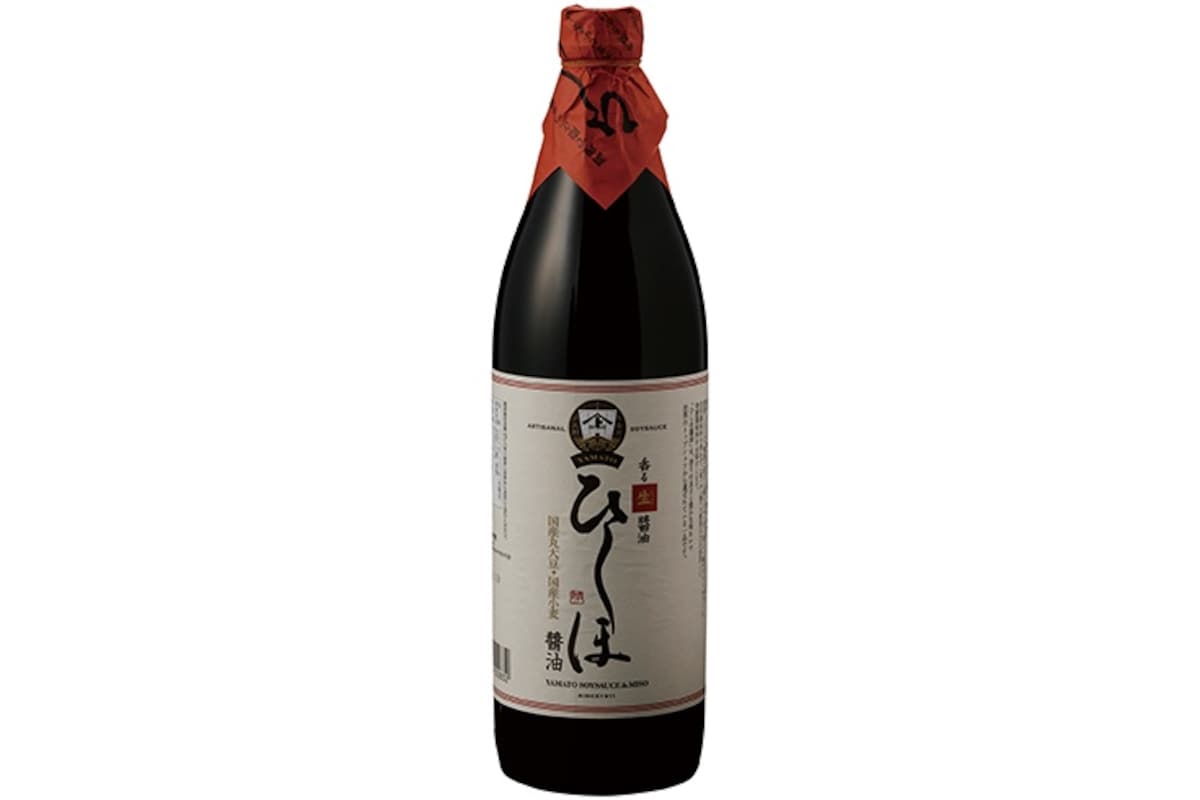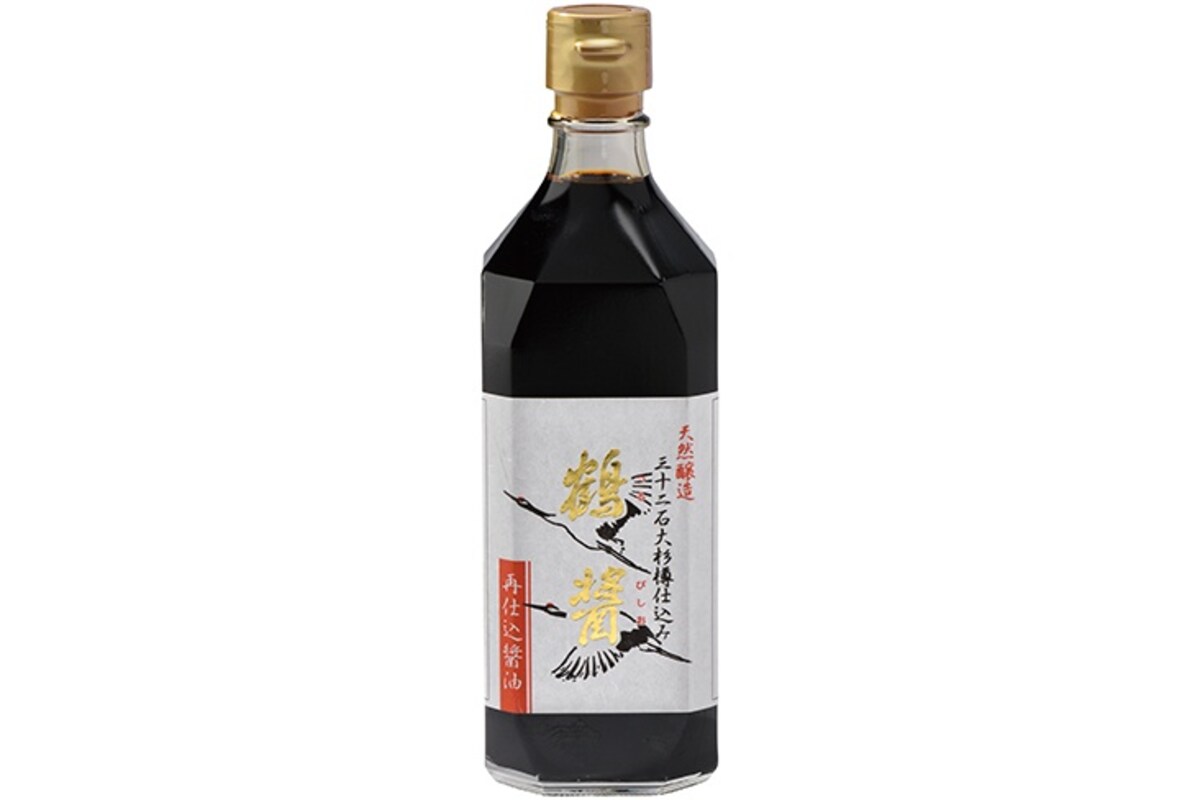7 Next-Level Soy Sauce Options
Soy sauce, or shoyu as it's known in Japan, is a staple in Japanese cuisine. But did you know there's more to it than the Kikkoman you pick up off the shelf? Take a look at this surprising selection of next-level soy sauce!
By AAJ Editorial Team7. Dashi Soy Sauce (Kagawa)
Produced by an old shop that has been manufacturing shoyu for over 220 years, this sauce is infused with flavor by combining soy sauce, the fundamental seasoning of Japanese cuisine, with dashi (soup stock), an element essential to Japanese cooking. This richly flavorful sauce blends naturally brewed soy sauce from Kagawa Prefecture, a famous soy sauce-producing region in Japan, with a dashi made from natural dried mackerel, dried bonito and kombu (kelp). It also contains 25 percent less salt than regular, commercially available soy sauce.
This is an all-around seasoning that can be used in many types of Japanese cuisine that have dashi as a major component. For example, it can be put on a chilled cube of tofu, or diluted for a noodle or vegetable broth. Here you can enjoy the unique Japanese food culture of dashi and shoyu together!
6. Mitsuboshi Shoyu Gift Pack (Wakayama)

https://thewonder500.com/product/mitsuboshi-shoyu-shoyusashi-giftyo-hakoiri-soy-sauce-gift-packaging/?lang=en
Horikawaya Nomura was a kaisen-donya (shipping agent) when it was founded in the Genroku Era (1688-1704). At some point, its business switched to selling the Kinzanji-miso and soy sauce it made as gifts for clients. Even today, 300 years and 17 generations later, the company has fiercely safeguarded its long-established manufacturing methods to carry on its handcrafted tradition based on the belief that it should only manufacture foods that its employees themselves would eat and be satisfied with.
Soybeans from Hokkaido are steamed in a pot using firewood, wheat is roasted, and malt is produced by hand over a four-day period. The ingredients are slowly fermented to produce naturally brewed dark soy sauce characterized by a mild and sweet flavor, and umami acquired only from domestically grown soybeans that produce a light aftertaste. The 200 ml (6.7 fl oz) bottle has a classy package design and can be used as a soy sauce bottle for the table. It is the perfect gift for wedding guests, when paying visits and showing appreciation, and as a souvenir for people visiting from overseas.
5. Edo-Period-Style Soy Sauce (Tokyo)
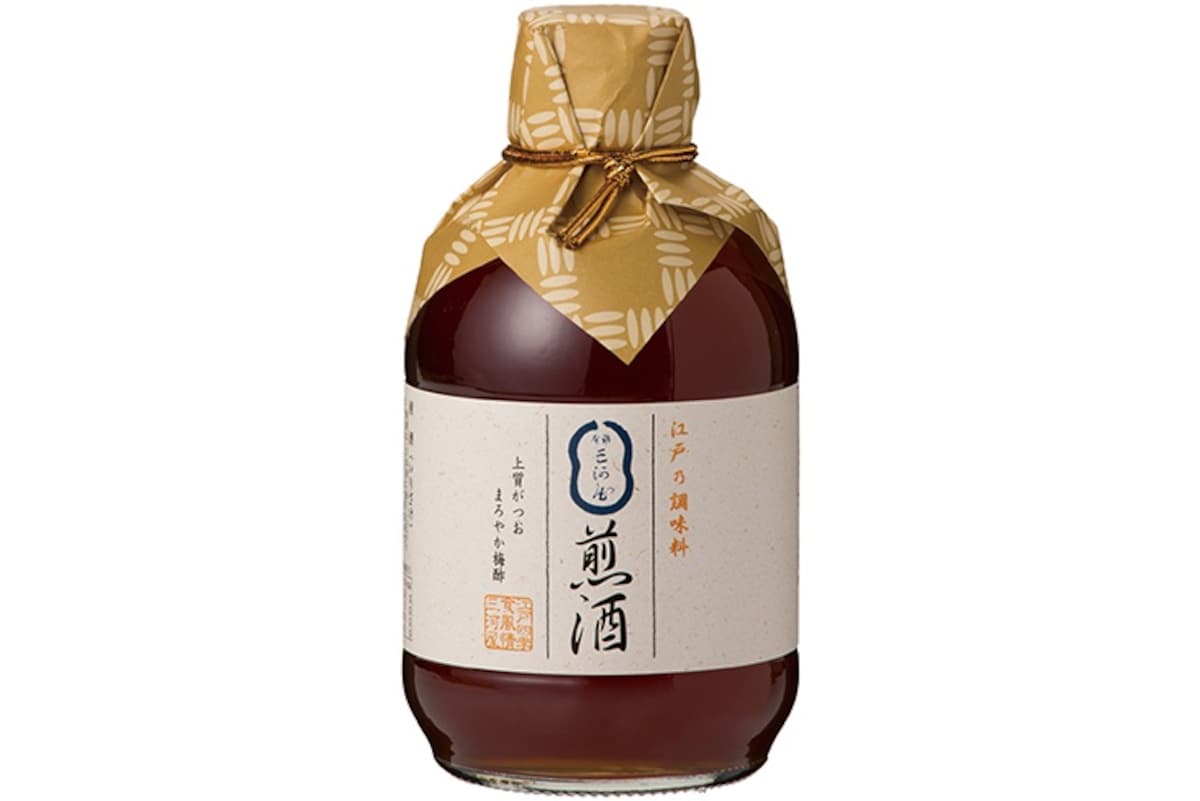
https://thewonder500.com/product/ginza-mikawaya-irizake-boiled-sake-flavored-with-japanese-pickled-plums-seasoning/?lang=en
This actually isn't soy sauce—it's irizake, a traditional Japanese sauce made with sake, pickled plums and shaved dried bonito. This was the most commonly used sauce for the 250 years of the Edo Period (1603-1868).
Try this irizake the same way you use regular soy sauce. It's good with tofu, fish or any kind of daily dish. By adding a drop of extra virgin olive oil, irizake can be used as a salad dressing, and it contains less sodium than soy sauce.Irizake brings out the flavor of ingredients and goes well with many types of food, particularly in hot weather.
4. Raw Soy Sauce (Ishikawa)
The town of Onomachi in the city of Kanazawa, where Yamato Soysauce and Miso Co., Ltd. is located, is one of the five major producers of soy sauce in Japan. Soy sauce is made by fermenting the main ingredients of soybeans and wheat for a long period of time. Many of the commercially sold products today use heat sterilization during bottling to boost shelf life, but Hishiho Shoyu removes bacteria using advanced filtration techniques. Since it is not heated, the inherent flavor and aroma of the unrefined soy sauce can be enjoyed as-is.
Hishiho Shoyu has a remarkable aroma that can not only be used in Japanese foods, but also as an all-purpose sauce that enhances any dish. It is highly regarded even by three-star chefs in France.
3. Shodoshima Soy Sauces (Kagawa)
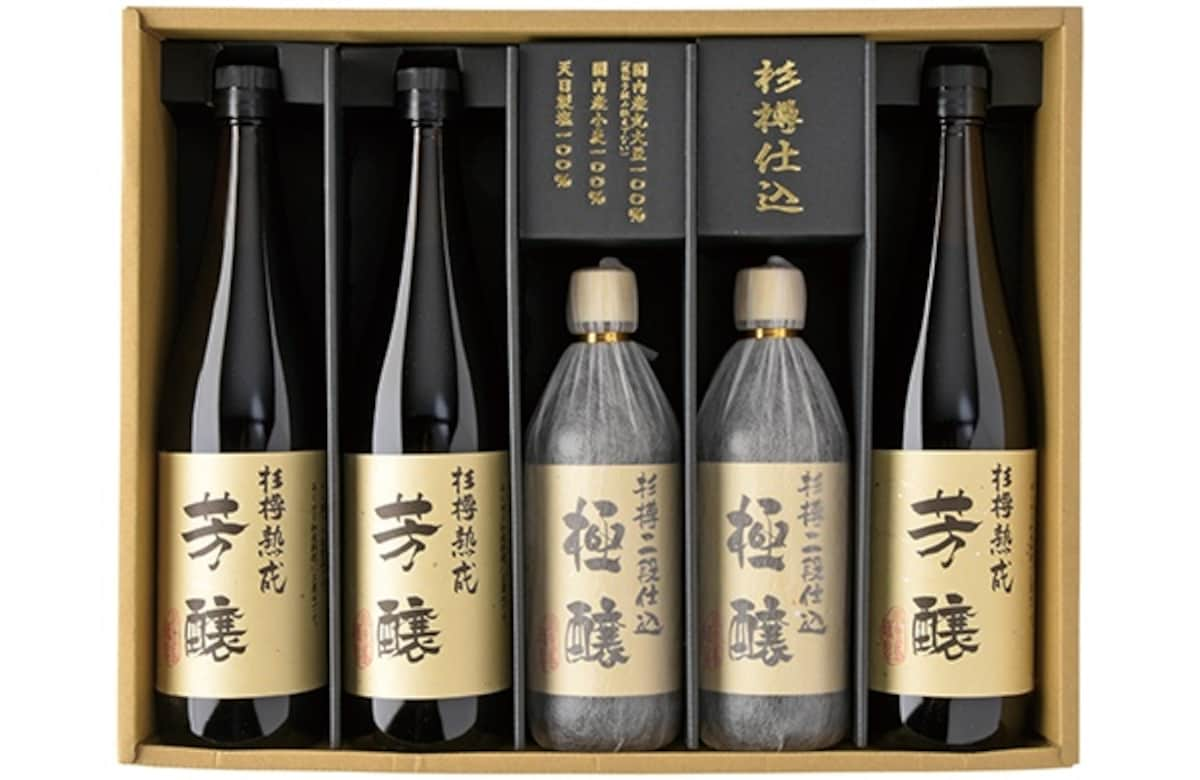
https://thewonder500.com/product/shodoshima-sugitarushikomi-shoyu-tsumeawase-assortment-of-soy-sauces-from-shodo-island-fermented-in-cedar-barrels/?lang=en
Shodoshima Island in Kagawa Prefecture is an island with rich natural surroundings in the Seto Inland Sea. Because this area has a warm climate that quickens fermentation of unrefined soy sauce, this condiment has been brewed here since the Edo Period (1603-1868).
Established 95 years ago, Shokin Shoyu has continued brewing soy sauce in large barrels of Japanese cedar 8 to 9 cubic meters (282-318 cubic ft) in size, a method passed down from the first generation of brewers. Ingredients selected for this sauce are domestic whole soybeans, domestic wheat and sun-dried salt.
Natural fermentation is assiduously adhered to, letting the natural temperature changes of the four seasons cause fermentation, unlike general soy sauce production with artificial temperature changes. Shodoshima Sugitarushikomi Shoyu, produced with natural ingredients and the power of nature, takes over a year to slowly ferment, making it a long-term fermented product. Enjoy the deep flavor that comes from quality ingredients!
2. Tsurubishio: Premium Soy Sauce (Kagawa)
While in the past, soy sauce in Japan was made using wooden barrels, this traditional brewing culture is on the path of extinction, swept away by the waves of modernization. These trends have stirred a sense of crisis in Yasuo Yamamoto, the fifth-generation owner of Yamaroku Shoyu Co., Ltd., a venerable soy sauce manufacturer established more than 150 years ago on Shodosihma Island in Kagawa Prefecture.
Yamamoto's passion for soy sauce brewed naturally in wooden barrels has inspired him to launch a project for restoration of the wooden barrel craft, and he's even become an apprentice at Japan’s only surviving workshop for making such barrels. This passion has also given birth to the Tsurubishio premium soy sauce manufactured in keeping with the traditional methods. This non-heat-treated pure soy sauce is matured for approximately two years, then returned once again to the barrels and aged for two more years, resulting in an exquisite, authentic soy sauce that boasts deep and luxuriant aroma and mild flavor unrivaled by other products.
1. Olive Smoked Soy Sauce from Shodoshima (Kagawa)
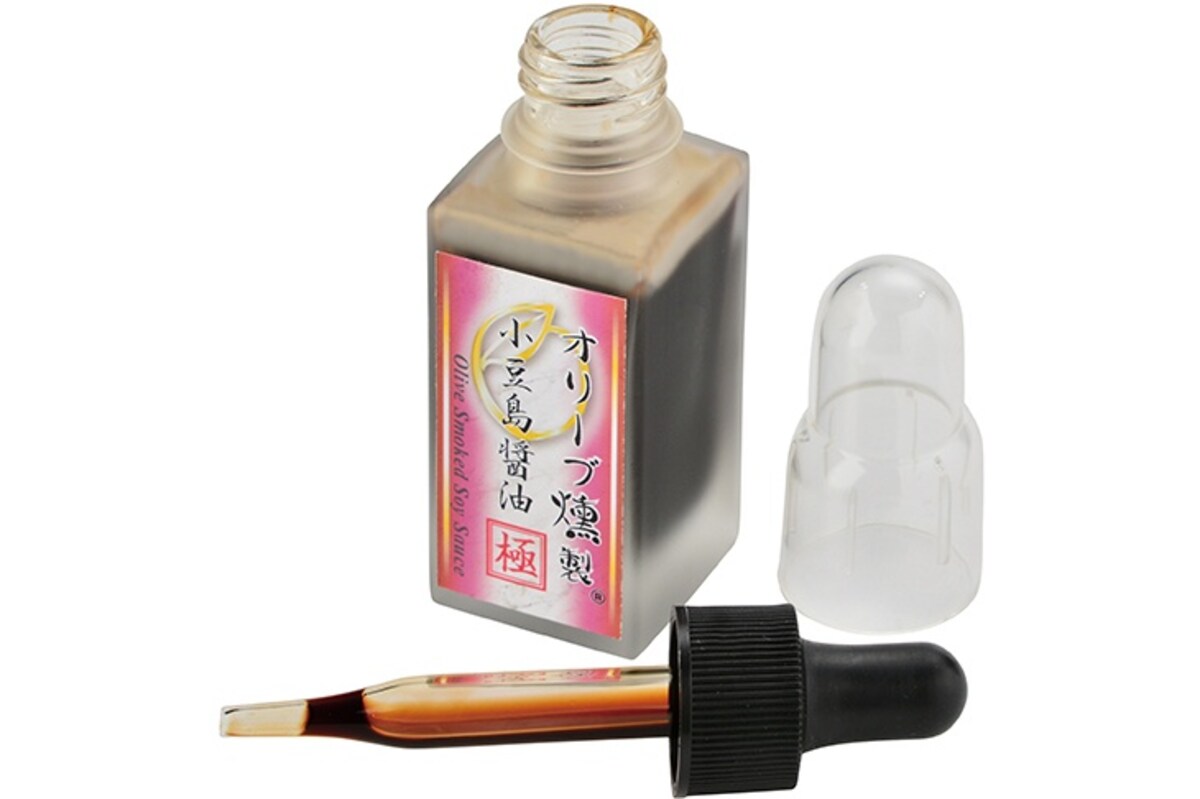
https://thewonder500.com/product/olive-kunsei-shodoshima-shoyu-kiwami-olive-smoked-soy-sauce-from-shodoshima-island/?lang=en
Traditional soy sauce dating back to the beginning of the Edo Period (1603-1868) and olives that have been grown for about 100 years are both special products of Shodoshima Island. These two luxurious items meet in Olive Kunsei Shodoshima Shoyu Kiwami (kunsei means smoked). The smoked flavor is added to the soy sauce by using an olive tree for the smoking wood. The smoking gives the soy sauce a smoother fragrance and deeper flavor.
Since it is made from Shodoshima fava beans and salt, this sauce can be enjoyed by people with soybean and wheat allergies. In addition, using olive as the smoking wood adds an antitoxidant function to the final product. Created from Japanese ingenuity unfettered by traditional conventions, enjoy this first-of-its-kind smoked soy sauce that combines the traditions of soy sauce and olives from this island in the Set Inland Sea.


